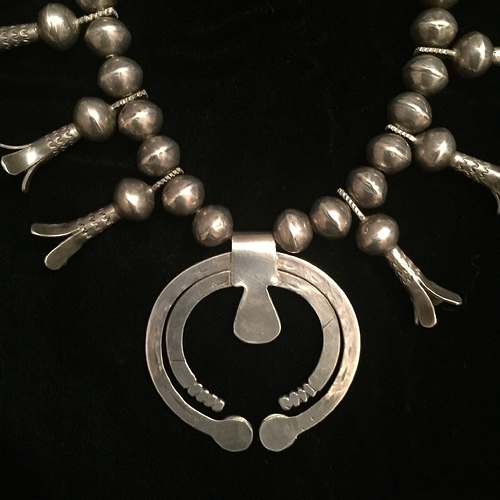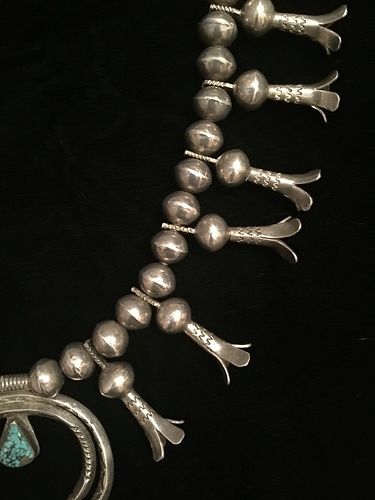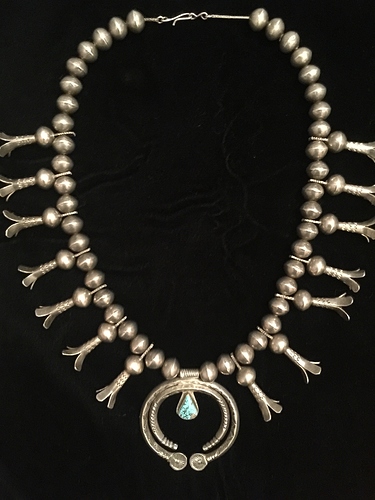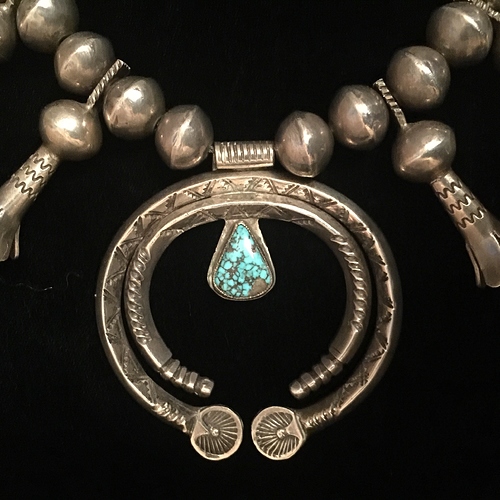Hi, this is an old squash blossom necklace (1930s?) and I’m hoping for your thoughts on what it’s worth. Chain is approx 23”: weighs 206g.
!Sweet! I’m curious to know also.
What can you tell us about the piece? When you purchased the necklace did they say it was 1930s?
Hi Jason, yes — the date provided was circa 1930, it was made by the Navajo and likely ingot: “it has the look, weight and feel of ingot.” The turquoise has a natural spider webbed matrix (though no mine was provided) and provenance indicates that it’s from the personal collection of a Native American art dealer. It wasn’t attributed to any specific artist and isn’t signed.
This is a great looking necklace. Love the simple ones. 
I’m also curious as to what Jason and the other experts have to say about it. The older style, simple squash blossoms are also my favorite. I’m not particularly good at dating them though. But to my amateur eye it does appear to be an early one.
The squiggly lines on the squash beads seem different to me and are vey cool
I have never heard someone give a date of when sheet silver became available to Navajo silversmiths, but I would imagine it is after World War II. You always hear of those stories of the government giving traders one once slugs. So everything before this date is manipulation of scrap silver and coins. To get those beads the smith would have used a roller to get a consistent thickness and then cut them out, he can control the thickness of the silver with a roller. Wires would have been drawn, heat and pull. If you say it is the 1930s and the previous owner says 1930s, it would be difficult to argue this. The necklace is fancy, lots of stuff going on, stamp work on the blossoms, etc. With the difficulty of making these wires and soldering I always think that 1930s is going to have a sandcast Naja. When you look at books like the recent Fred Harvey you don’t even see a squash blossom. 1930s, Nevada spider web, $4500 - $6000
Thanks so much for this info Jason! It’s great to get an understanding of what the fabrication process was at that time and it helps to demystify the valuation. I treasure this piece and am glad that it was a sound investment.
Amazing! I still don’t know how to tell when something is truly old (pre 1940s) so these topics are helpful.
Amazing artistry! The time and patience to make a piece like this is incredible! Thanks for sharing with us…



